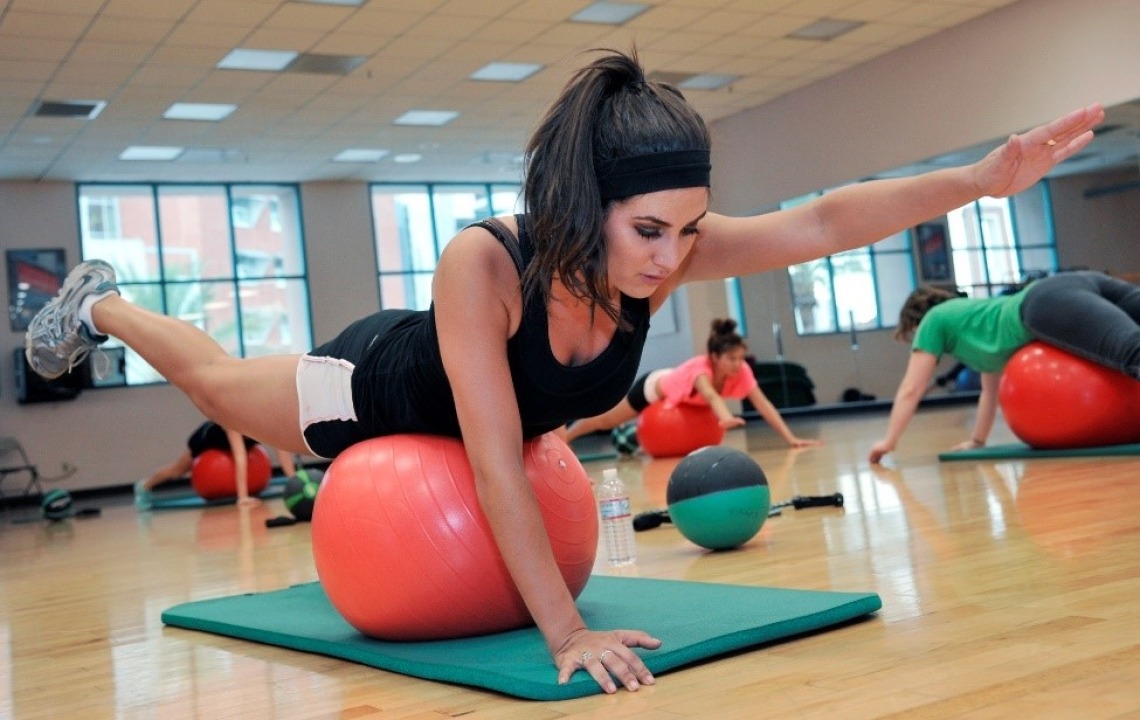Core vs. Abdominal Exercises

Exercising is an important part of the physical dimension within the 8 Dimensions of Wellness. Yet students often get stuck in exercise routines that focus on upper body, lower body, cardiovascular work, and abdominals while putting less of a priority on the core. Your core provides the foundation for a number of exercises and should be a focus in your exercise routine.
- A strong core can improve your stability and balance. Many activities, from daily living to sports performance, are aided by a stable core.1,2 It may help you feel steadier and more confident as you take part in activities ranging from kicking a soccer ball or practicing yoga to simply picking up your backpack off of the ground.
- Working your core can promote good posture through stability.1 This can help minimize any imbalances that your body may deal with on a daily basis. It may allow you to move more freely throughout your day.
- Strengthening your core may decrease the likelihood of back pain. This is due to helping increase the strength in both anterior, posterior, and deep muscles in the area. It can decrease the possibility of imbalances and strain on the lower back.1
How to Work Out Your Core
In gym classes growing up, sit-ups were engrained to be an all-star core exercise. But it is difficult to reach your entire core with just one repetitive (and often unmotivating) exercise. Your core is much more than just the front portion of your stomach. To better picture your core, think of a “muscular box” that includes your abdominals, gluteal, paraspinals, diaphragm, hip girdle, and pelvic floor.3 It is important to target all these different muscles and to work on core flexibility to assist with a deeper range of motion and movement efficiency.3 Implementing a wide range of core exercise may also help you stay motivated and achieve a more holistic core workout.
10 Exercises to Improve Your Core
The variety of exercises listed here can help stretch and strengthen your core4 and may be done in any order with as many reps and sets as you feel comfortable. Try mixing and matching the workouts that utilize different body parts to engage your whole core and spice up your exercise routine.
| EXERCISE | BODY PARTS MOST UTILIZED | LEVEL OF EXERCISE |
|---|---|---|
| Cat Cow | Back, chest | Beginner |
| Bird-Dog | Abdominals, back, glutes, hips | Intermediate |
| Supermans | Back, glutes, hips, shoulders | Beginner |
| V Sit Partner Rotations | Abdominals | Beginner |
|
Plank |
Abdominals, back |
Intermediate |
|
Glute Bridges |
Abdominals, glutes, hips |
Beginner |
|
Supine Pelvic Tilts |
Abdominals |
Beginner |
|
Side Plank |
Abdominals, glutes, hips |
Intermediate |
|
V-Up |
Abdominals |
Intermediate |
|
Inchworms |
Abdominals, Back, Chest, Shoulders, hamstrings |
Advanced |
Looking for more stability work? Campus Rec has classes that focus on core stabilization and strengthening. They will put your core to the test in fun, yet challenging ways.
References
1MPOWER. (2016, September 16). Training Abs-It’s Not All About the Six Pack! https://mpowerbestrong.wordpress.com/2016/09/16/training-abs-its-not-all-about-the-sixpack/
2Bejeck, B. (2000, March). All About Abs. IDEA Health & Fitness, 18(3).
3Akuthota, V., Ferreiro, A, Moore, T., Fredericson, M. (2008). Core Stability Exercise Principles. Current Sports Medicine Reports, 7(1), 39-44. doi: 10.1097/01.CSMR.0000308663.13278.69
4American Council on Exercise. (n.d.) Exercise Database & Library. https://www.acefitness.org/education-and-resources/lifestyle/exercise-library/
Additional Resource
Richardson, C., Jull, G., Hodges, P., and Hides, J. (1999). Therapeutic exercise for Spinal Segmental Stabilization in Low Back Pain: Scientific Basis and Clinical Approach. Churchil Livingstone.

